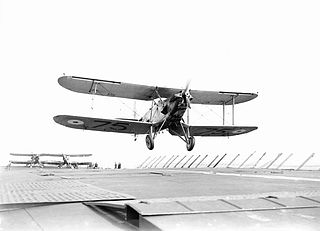
The Blackburn T.5 Ripon was a British carrier-based torpedo bomber and reconnaissance biplane which first flew in 1926. It was used by the Fleet Air Arm as a torpedo bomber from 1930 until 1935. Ripons were also sold to Finland, where they continued to be used in action in the Winter War and the Continuation War until 1944.
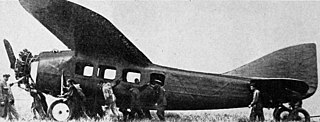
The Bernard 18 was a prototype airliner developed in France in the 1920s. One of the two prototypes built was used in an abortive transatlantic crossing attempt and a number of failed attempts for aerial records.

The Bleriot-SPAD S.51 was a French fighter aircraft developed in 1924 in response to a French Air Force requirement for an aircraft to replace their obsolete Nieuport-Delage NiD.29s.

The Farman F.120 and its derivatives were a family of multi-engine airliners and bombers of the 1920s built by the Farman Aviation Works in France.

The Caproni Ca.97 was a civil utility aircraft produced in Italy in the late 1920s and early 1930s. As originally designed, it was a high-wing braced trimotor monoplane of conventional configuration with one engine mounted on the nose and the other two carried on strut-mounted nacelles at the fuselage sides. Examples were also produced with only the nose engine or only the two nacelle-mounted engines.

The Focke-Wulf A 17 Möwe was an airliner built in Germany in the late 1920s. It was a conventional high-wing cantilever monoplane with fixed tailwheel undercarriage. The aircraft provided fully enclosed seating for up to eight passengers and had a separate, fully enclosed flight deck for the two pilots. Most examples flew with Deutsche Luft Hansa, serving until around 1936. In the early 1930s, two A 17s were used for testing the Junkers Jumo 5 diesel engine.
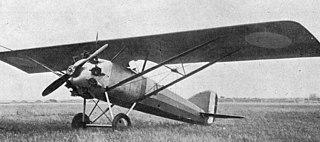
The Gourdou-Leseurre GL.30 was a racing aircraft built in France in 1920 which formed the basis for a highly successful family of fighter aircraft based on the same design.
The Nieuport-Delage NiD 640 was a French four-passenger transport monoplane built by Nieuport-Delage.

The Latham 43 was a flying boat bomber built in France in the 1920s for service with the French Navy. It was a conventional design for its day - a two-bay biplane with unstaggered wings, and engines mounted tractor-fashion on struts in the interplane gap. The pilot sat in an open cockpit, with a gunner in an open bow position, and another in an open position amidships.

The Lioré et Olivier H-190 was a flying boat airliner produced in France in the late 1920s. Conventional for its day, it was a single-bay biplane with un-staggered wings, its single engine mounted tractor-fashion underneath the upper wing and supported on struts in the interplane gap. Early examples had the pilot's open cockpit located aft of the wing, but this was later relocated forward of the wing.
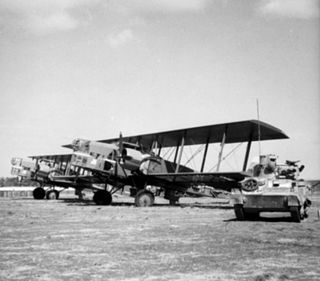
The Lioré et Olivier LeO 25 was a bomber aircraft produced in France in the late 1920s.

The Farman NC.470 was a French twin-engined floatplane designed as a crew trainer for the French Navy. It was used in small numbers for both its intended role as a trainer and as a coastal reconnaissance aircraft at the start of World War II.

The Nieuport-Delage NiD 42 was a fighter aircraft built in France in the early 1920s, the first in a family of designs that would form the backbone of the French fighter force over the next decade.

The Wibault 7 was a 1920s French monoplane fighter designed and built by Société des Avions Michel Wibault. Variants were operated by the French and Polish military and built under licence for Chile as the Vickers Wibault.

The Gloster Goring was a single-engined two-seat biplane designed to meet 1926 Air Ministry specifications for a day/torpedo bomber. It was not put into production and the one aircraft built served later as an engine testbed.
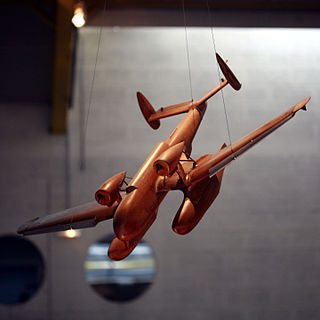
The Loire-Nieuport 10 was a 1930s French prototype long-range maritime reconnaissance and combat floatplane produced by Loire-Nieuport, a joint venture between Loire Aviation and Nieuport-Delage. It was an attempt to answer the requirements for the Navy's programme Hydravion éclaireur de combat for a large floatplane capable of acting as a torpedo bomber or reconnaissance aircraft.

The Dyle et Bacalan DB-10 was a heavy night bomber, designed in France and flown in 1926. It was a twin engine, high wing, metal frame monoplane, distinguished by a very thick centre section wing which formed the forward fuselage and housed the engines.

The SNCAC NC.4-10 was a twin-engine floatplane torpedo bomber built in France in the late 1930s. It was one of several prototypes competing for an Admiralty specification but no contracts were awarded after the military lost interest in the type.
The Villiers 26 was a French naval seaplane which used Handley Page slats to provide the wide speed range required for escort and patrol duties. It was tested, behaved satisfactorily but received no production order.

The SPCA 10 or SPCA Paulhan-Pillard E.5 was a large, all-metal, French reconnaissance and bomber flying boat flown in 1928. Only one was built and this was lost in a fatal crash during development.


















